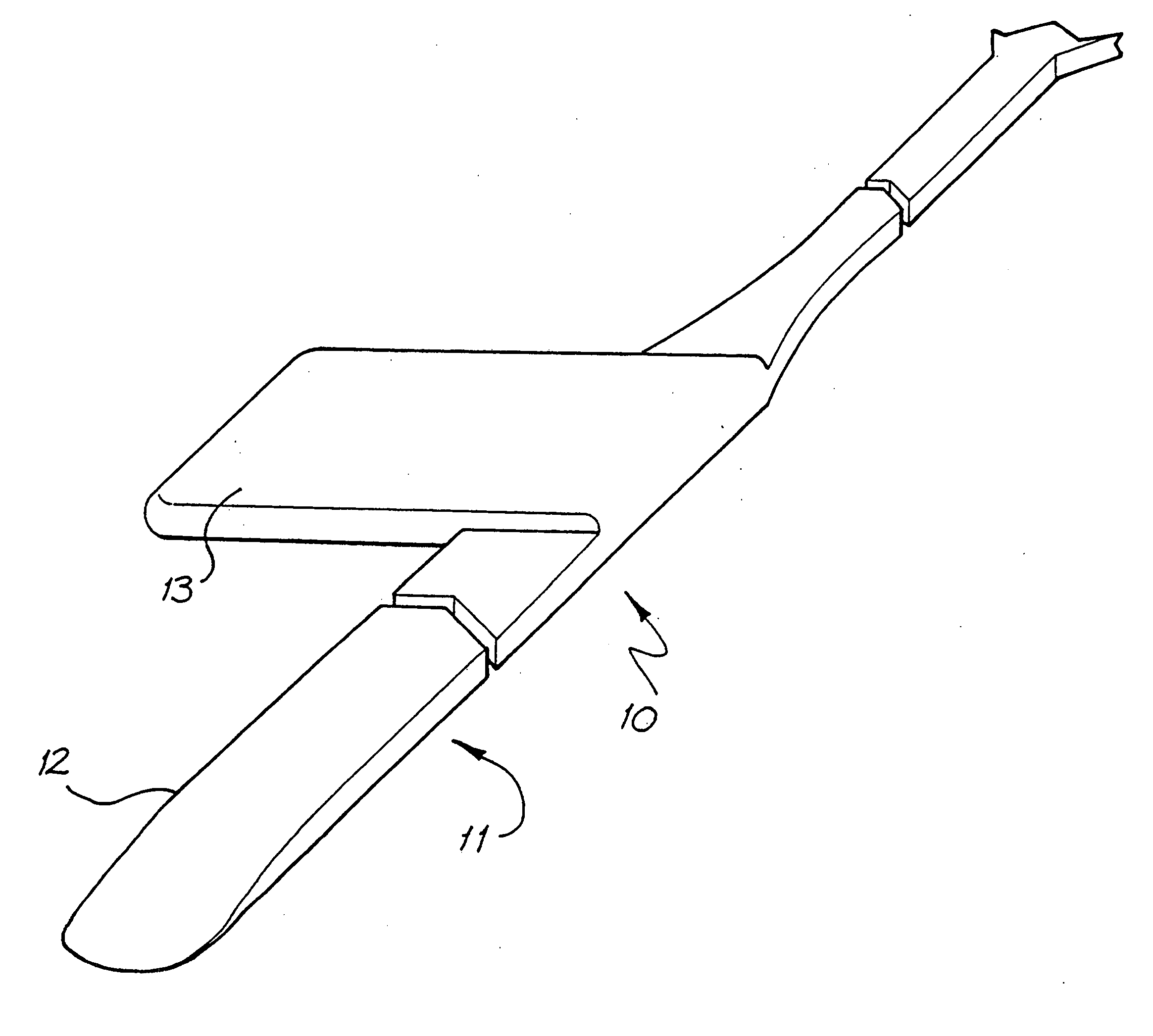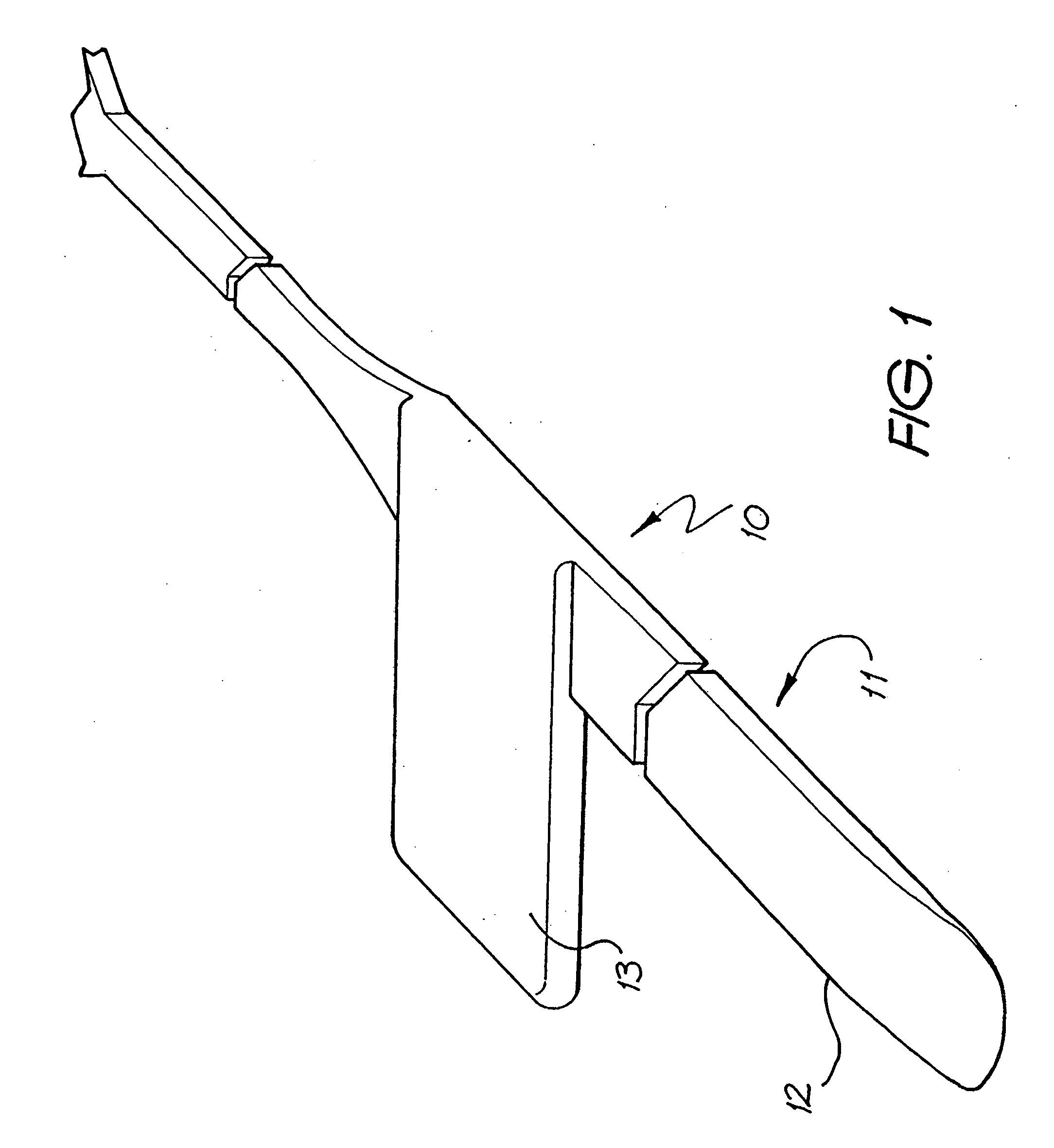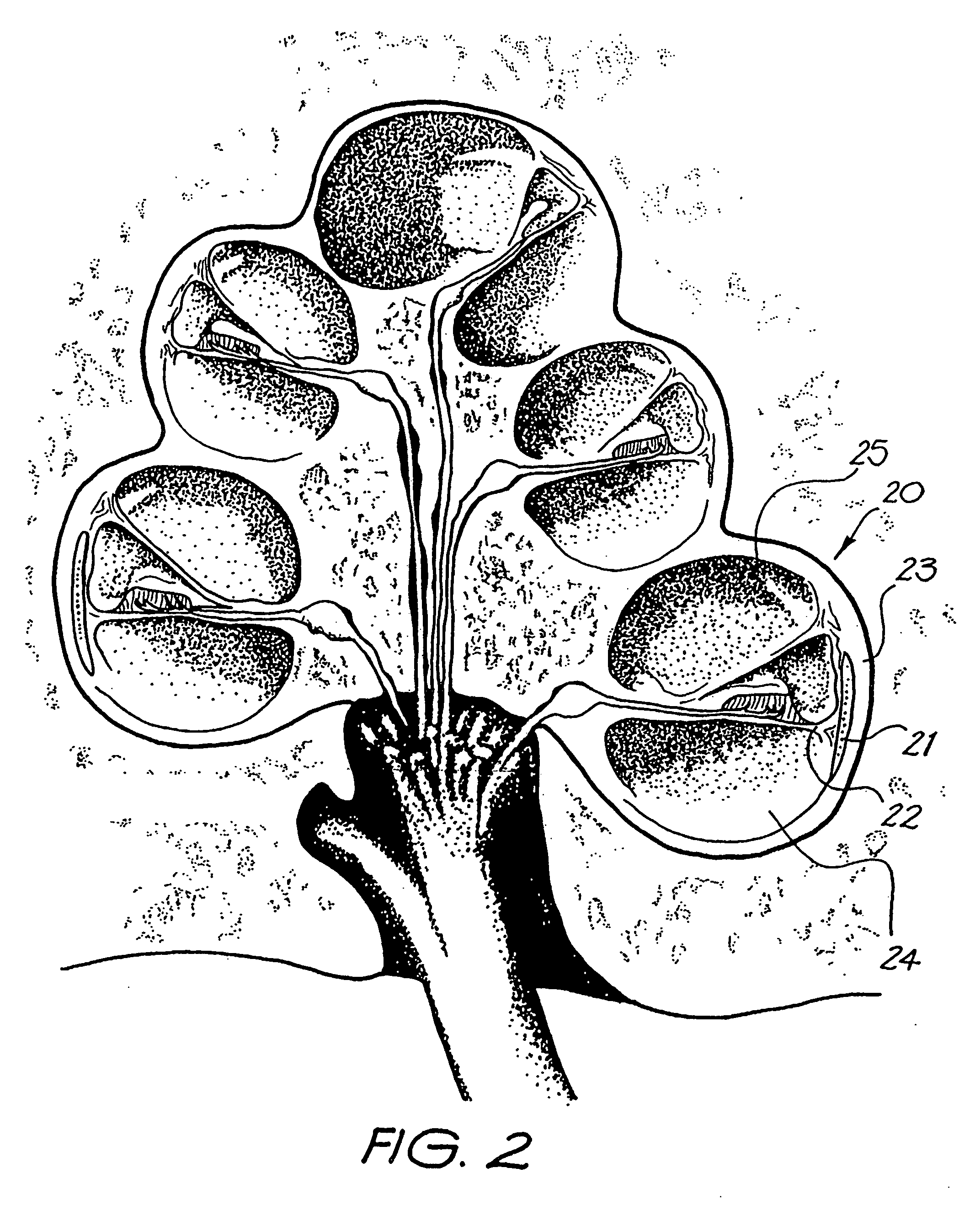Endosteal electrode
a technology of endosteal electrodes and electrodes, which is applied in the field of endosteal electrodes, can solve the problems of conductive hearing loss, impeded normal mechanical pathways for sound to reach the hair cells in the cochlea, and may have hearing loss of both types, so as to reduce the impact of tinnitus condition, prolong the battery life of the device, and reduce the effect of tinnitus
- Summary
- Abstract
- Description
- Claims
- Application Information
AI Technical Summary
Benefits of technology
Problems solved by technology
Method used
Image
Examples
Embodiment Construction
[0074] One embodiment of an electrode assembly for use in the present invention according to the present invention is depicted generally as 10 in the drawings.
[0075] The assembly 10 includes an elongate electrode carrier member 11. For the purposes of clarity, the plurality of electrodes that are mounted on the carrier member 11 are not depicted in the drawings. While not depicted, the electrodes can be disposed in a linear array on the carrier member 11 and be adapted to apply a preselected tissue stimulation to the cochlea.
[0076] The depicted carrier member 11 is preformed from a resiliently flexible biocompatible silicone and extends from a distal end 12 to a stop member 13.
[0077] The carrier member 11 is adapted for intracochlear but extraluminar insertion within the cochlea of an implantee.
[0078] In use, the carrier member 11 is adapted to be implanted in the crevice 21 (see FIG. 2) between the spiral ligament 22 and the endosteum 23 of the lateral wall of the cochlea 20. T...
PUM
 Login to View More
Login to View More Abstract
Description
Claims
Application Information
 Login to View More
Login to View More - R&D
- Intellectual Property
- Life Sciences
- Materials
- Tech Scout
- Unparalleled Data Quality
- Higher Quality Content
- 60% Fewer Hallucinations
Browse by: Latest US Patents, China's latest patents, Technical Efficacy Thesaurus, Application Domain, Technology Topic, Popular Technical Reports.
© 2025 PatSnap. All rights reserved.Legal|Privacy policy|Modern Slavery Act Transparency Statement|Sitemap|About US| Contact US: help@patsnap.com



